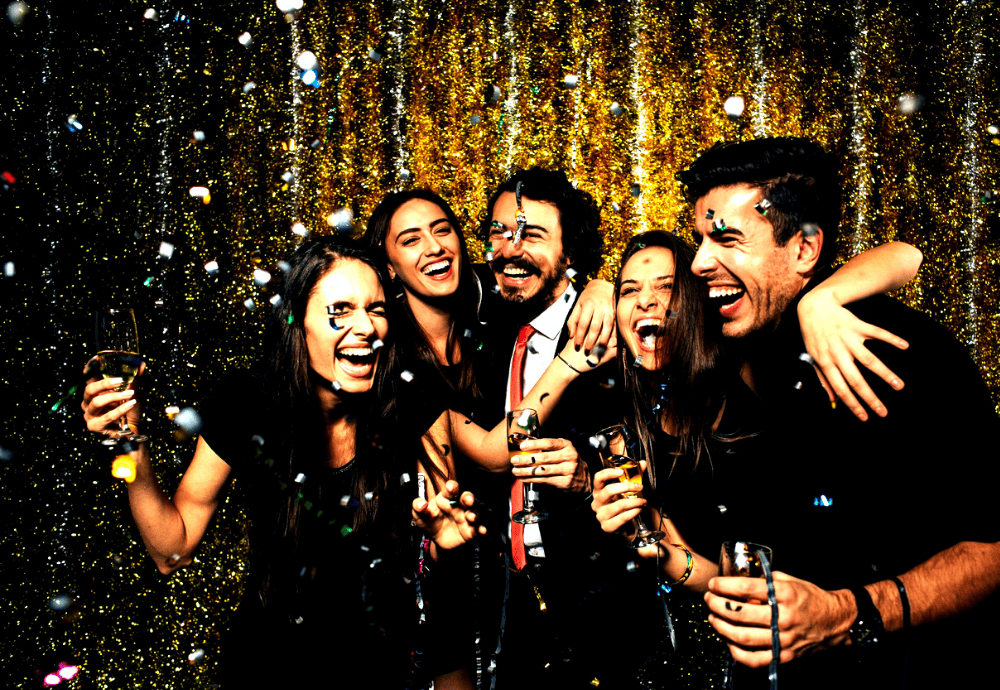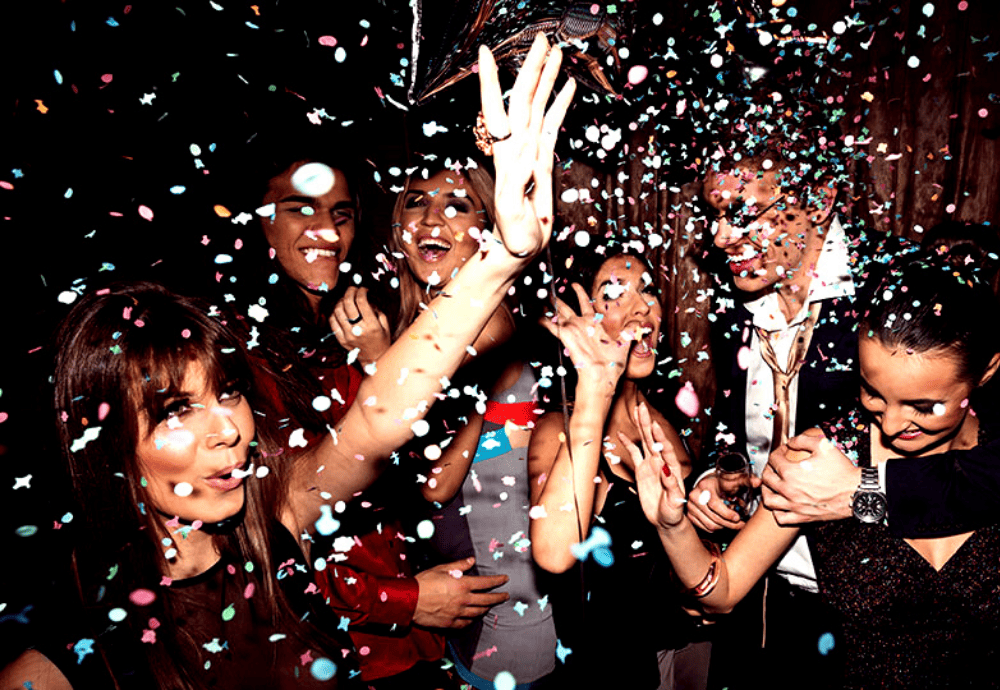New Year’s is a time for parties with friends and families and nothing makes party time more fun than a game of trivia. We have collected New Year’s Day Facts from the origin and history of New Years, through symbols, superstitions, and traditions, to how New Years is celebrated around the world. Then we have some New Year Trivia Questions and Answers to see how much you know about the holiday. Finally, we have a quiz to test yourself, family, and friends
Table of Contents
New Year Trivia Questions and Answers
Now we have a fun section of our article where you can see how much you know about New Year’s. We have chosen information that the average person is probably familiar with from experience, their education, or just a love of New Year’s trivia. The answers are listed after the questions so you can easily test yourself, your friends, or your family.
Questions
- From what Roman god does the month of January get its name?
- On what calendar is Chinese New Year based?
- Ads for what product were banned from American TV on January 1, 1971?
- What is the translation of the title of the song “Auld Lang Syne”?
- About how many people watch the Waterford crystal Times Square New Year’s Eve ball drop on television each year?
- What food do people in the Southern United States often eat for good luck on New Year’s Eve?
- On what date was New Year’s celebrated in ancient Rome?
- At mid-night on New Year’s in America, it is traditional to kiss and sing what song?
- What Australian city has one of the largest New Year’s celebrations?
- On New Year Eve in 1985, what entertainer died in a controversial airplane crash?
- At one minute before midnight in Spain, twelve of what is eaten before the clock strikes for the New Year?
- What is the name of the calendar that marked January 1st as New Years in 1582?
- Who was the poet that recorded the words to the Scottish ballad “Auld Lang Syne” in 1788?
- What was the name of the movie which generated the highest box office sales for a one shown on New Year’s Day?
- What is the geometrical shape of the Waterford crystal ball that is dropped in Times Square on New Year’s Eve?
- In the Jewish religion, what is Rosh Hashanah?
- In what ancient country were eggs given as gifts on New Year’s Day?
- What is one of the top New Year’s resolutions?
- When was the first Tournament of Roses in Pasadena, California?
- Which British singing group was unable to pass a Decca record’s audition on January 1, 1962?
- If you are in Scotland on New Year’s eve, who do you kiss at midnight?
- Who was the first broadcast host of the Times Square New Year’s Eve celebration?
- Which calendar is used most widely in the world today and upon which is based a January 1st New Year?
- What was the first year there were fireworks for the New York New Year’s Eve celebration?
- About 360 million glasses of what drink are served in the United States each New Year’s Eve?
New Year Quiz
If you have read through our New Year’s Trivia article and have a good memory, you should do well on this short quiz. We have made it true and false, so it can be answered quickly.
True/False Questions
- January is named after the Roman two-faced god Janus.
- Before purchasing and setting off fireworks, one should check the laws regarding what types of fireworks are and are not permitted.
- The earliest known New Year’s celebration was 4,000 years ago in Mesopotamia.
- New Year’s Eve is celebrated on the same date all over the world.
- People eat special foods on New Year’s Eve and Day believing they will bring good things during the coming year.
- The ball that falls on New Year’s Eve in Time’s Square has always been made of Waterford crystal.
- According to the National Insurance Crime Bureau more cars get stolen on New Year’s Eve than at any other time of the year.
- A song called “Longplayer” began on January 1, 2000 and will end on December 31, 2999, when it will start over again.
- The top New Year’s resolution is to make more money in the coming year.
- In an effort to reduce drunk driving, in some states AAA will tow your car and give you a lift home for free on New Year’s Eve, even if you are not a member.
- Many people celebrate on New Year’s Eve by drinking and kissing someone at midnight.
- Different countries use different calendars to mark the beginning of the year, some the Julian, some the Gregorian, some the Lunar, and others.
Yes, they are mostly true statements. Hopefully, you aced the quiz.
New Year’s Day Facts
New Years, like many holidays, has its roots in history, some of which is familiar and some of which may surprise you. You may also be surprised about the symbols, superstitions, and traditions surrounding this holiday. Finally, we have some surprising ways New Year’s Eve and Day are marked and celebrated.
New Year Origins and History
New Year’s was not always celebrated on January first. The winter solstice or summer equinox marked the beginning of the new year for some cultures. We have collected a few New Year’s origins and historical facts to educate you and give you some conversation starters for New Year’s Eve parties.
- The earliest known New Year’s celebration was in Mesopotamia in 2000 B.C.
- The Babylonians celebrated the start of the new year on the first new moon following the vernal equinox, the day in late march with an equal amount of daylight and darkness.
- The ancient Romans celebrated the new year in March when planting crops began.
- Julius Caesar, after whom the Julian calendar is named, marked the New Year as January 1st in 46 B.C.
- Until 755, the French began the year on December 25, then moved it to March first, and then in the Twelfth Century the year began at Easter. King Charles IX declared January first as the start of the new year in 1564.
- March 25th, the Day of the Annunciation was celebrated as New Year by the English until 1752 when they decided to make January 1st the first day of the New Year.
- In Alaska, Eskimos celebrate the New Year’s Day with the arrival of the first snow.
- In Israel, a European-style New Year’s Day is celebrated on January 1st, and they have another celebration in September.
- North Korea uses what they call the Juche calendar for numbering the years with year one beginning on Kim Il Sung’s birthday, April 15th.
- Most countries celebrate New Year’s Eve on December 31st and New Year’s Day on January 1st now.
New Year Symbols and Superstitions
Many countries have unique symbols and superstitions for New Year’s Eve and New Year’s day. We have collected some we think you will enjoy.
- You are not supposed to take out the garbage or propose marriage in Scotland on the first day of the New Year.
- Some believe one should not pay off debts just before New Year’s or one will be in debt the entire following year.
- People in Cuba fill all the dishes in the house with water on New Year’s Eve and then throw the water into the street to wash away all their sins.
- Two symbols for Chinese New Year are the dragon, which symbolizes well-being, and bright paper street lanterns.
- On New Year’s Eve, the head of a Grecian family throws a pomegranate at the house wall and the scattering seeds promise good luck and prosperity.
- In Tibet, people bake cakes on New Year’s Eve and give them to those who pass by, believing that the number of pies distributed helps determine one’s wealth in the coming year.
- Some believe what one dreams just before the new year predicts what the new year will bring.
- Vietnamese believe if you release carp into a pond near your house, the gods will ride it to heaven where they will report to the gods about the family, then turn into dragons at the end of the year.
- The belief that what we eat determines our financial fortune and success for the coming year results in several food choices.
In the U.S., eating black-eyed peas on New Year’s day brings good luck.
The Japanese eat long noodles, signifying long life on New Year’s.
People in Germany, Ireland, and Italy eat leafy greens and legumes for financial success.
People in Brazil eat lentil soup for New Years, symbolizing wealth and well-being.
Scandinavians eat rice porridge containing one almond nut that brings happiness to the person who finds it.
Pork is served on New Year’s in Cuba, Hungary, Portugal, and Austria signifying progress and prosperity.
New Year Traditions
Traditions connect us to our family and cultural history. Those surrounding New Year’s range from the practical to the profound, with several that are just plain fun.
- California’s New Year’s tradition is the Pasadena Rose Bowl parade, featuring floats decorated with millions of flowers.
- At exactly 11:50 pm a Waterford crystal ball begins its traditional descent from the top of a building in New York City’s Time Square, reaching the ground at the stroke of midnight.
- The tradition of performing Beethoven’s 9th Symphony began when in was introduced to Japan by German POWs in WWI.
- Denmark’s New Year’s tradition is ending the evening meal with Kransekage, a cone-shaped, steeply sloped cake decorated with flags and firecrackers.
- Ecuadorian New Year involves burning straw effigies at the stroke of midnight to leave behind the troubles of the old year and bring better life in the coming year.
- In Italy, the tradition is to throw out old clothes, furniture, and dishes on New Year’s Eve in order to have more wealth and luck in the New Year.
- In Japan on New Year’s, people traditionally serve cabbage for joy, roasted chestnuts for success, beans for health, and caviar for many children.
- On New Year’s Day in Akita, Japan there is a tradition where men dress as mountain demons, parade around the streets with knives, going into homes to see if children have behaved during the past year.
- In Spain and some other countries, the New Year’s tradition is to eat twelve grapes during the last minute before the New Year begins to have good luck during the coming year.
- The Estonians believe eating many feels will provide strength in the coming year, so they eat as many as twelve meals during the New Year’s Eve day.
- The Greek New Year’s tradition of podariko (first footing) involves hanging a kremmido (big onion) outside on the door or breaking a pomegranate for prosperity, good luck, and abundance.
- The traditional English song “Auld Lang Syne” (“old long since”/”times gone by”) is a Scottish song first published by poet Robert Burns in his Scots Musical Museum (1796).
New Year Celebrations
People celebrate New Year’s in many different ways. Read on to find out what some of the most unique and interesting ones are.
- Gifts are given on Three King’s Day in Cuba on January 6th, twelve days after Christmas, when it is believed the three kings of the Bible reached the manger.
- Mexico, Greece, and the Netherlands bake ring-shaped pastries and cakes signifying the year has come to a full circle.
- The shoreline of Australia’s Sydney Harbour stretches 40 miles and is crowded by more than a million people on New Year’s Eve for the fireworks display.
- In Scotland, barrels of tar are set on fire and rolled along the streets to drive away the old year and welcome the new.
- To get many new friends during the coming year, people in Denmark throw and break dishes at the doorsteps of their neighbors.
- Since 2008, the city of Mobile, Alabama has raised a 12-foot tall, lighted, mechanical Moon Pie to celebrate the coming of the New Year.
- One of the largest fireworks displays in the world is in Reykjavik, the capital of Iceland, and most of the profits from firework sales fund rescue operations in the country.
- Every year in Antarctic there is a music festival on New Year’s Eve called Icestock.
- Grandfather Frost (“the spirit of winter”) replaced Santa-centered Christmas celebrations when religion was suppressed in Soviet Russia. He brought gifts on New Year’s and placed them under the “New Year’s tree”.
Now you are ready to use our trivia at your next New Year’s party to surprise and delight your family. Have fun!
Susan majored in English with a double minor in Humanities and Business at Arizona State University and earned a Master’s degree in Educational Administration from Liberty University. She taught grades four through twelve in both public and private schools. Subjects included English, U.S. and world history and geography, math, earth and physical science, Bible, information technologies, and creative writing.
Susan has been freelance writing for over ten years, during which time she has written and edited books, newspaper articles, biographies, book reviews, guidelines, neighborhood descriptions for realtors, Power Point presentations, resumes, and numerous other projects.



